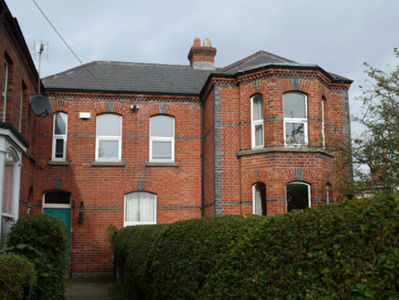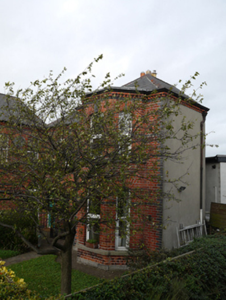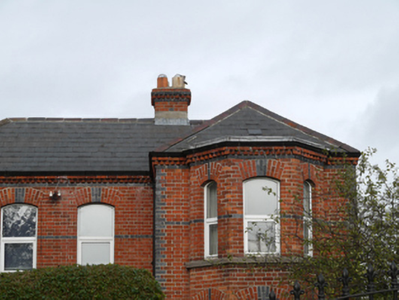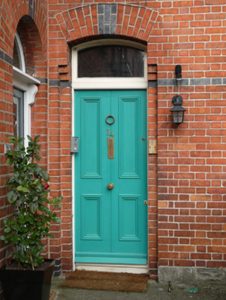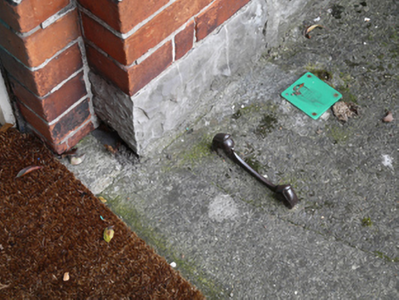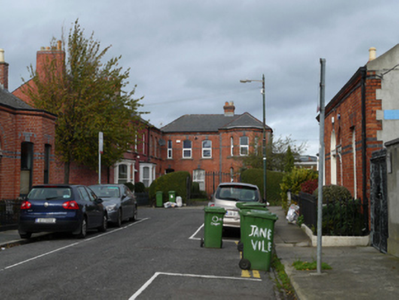Survey Data
Reg No
50080893
Original Use
House
In Use As
House
Date
1875 - 1885
Coordinates
315100, 232969
Date Recorded
22/10/2013
Date Updated
--/--/--
Description
Attached four-bay two-storey house, built c.1880, having advanced bay with full-height canted bay window to front (south) elevation. Hipped artificial slate roof having red and black brick chimneystacks with sawtooth cornice, and red brick sawtooth eaves course. Red brick walls laid in Flemish bond having black brick courses and rock-faced cut calp limeston plinth course. Rendered walls to east elevation. Segmental-headed window openings having black brick keystones, cut granite sills and replacement uPVC windows. Segmental-headed door opening having corbelled reveal, black brick keystone, timber panelled door with plain overlight, and cut granite entrance step. Remains of cast-iron bootscrape. Front garden enclosed by painted metal railings and recent gates.
Appraisal
This house has an imposing presence on an axis with Emorville Avenue to the south. It retains its early form and fabric, and its generous front garden remains intact, contributing to its early suburban character. The construction of new residential streets in this area coincided with the immigration of Jewish communities fleeing pogroms in Europe in the late nineteenth century, and the area became known as Little Jerusalem. Thom's Directory of 1900 notes many Jewish surnames among the householders of Saint Kevin's Parade, and the Jewish Encyclopedia of 1906 notes a 'hebrah' or minor synagogue on the street. James Joyce's Ulysses refers to fictionalised characters living in this street, including Moses Herzog the one-eyed pedlar.

